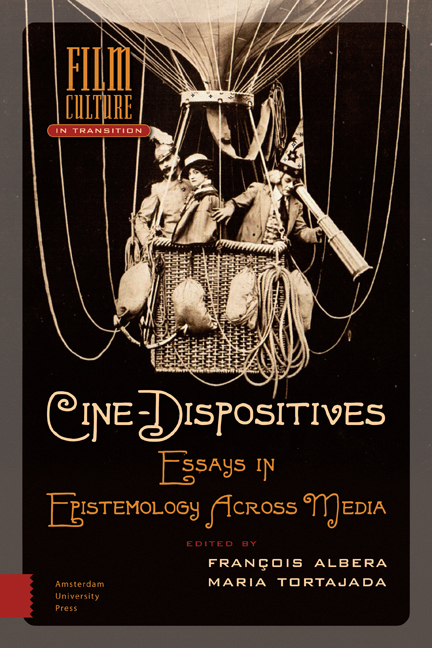Foreword
Published online by Cambridge University Press: 10 February 2021
Summary
The purpose of the present volume is to (re-)examine the question of viewing and listening dispositives, from the emergence of the notion in the field of film studies in the late 1960s to the more limited – technical and descriptive – use that followed, as well as the parallel elaboration on the term by Michel Foucault, on a completely different scale, in Discipline and Punish, up to more recent developments in literature and art. The book also aims to confront approaches and perspectives in the very different context that is ours today: the generalization of new technologies, the digital era and the appearance of new theoretical developments around these phenomena, new models of knowledge generally situated in the field of media (we are thinking of Jonathan Crary, Friedrich Kittler and Lev Manovich, among others). The emergence of the notion of “dispositif” in film studies was tied to a model of cinema and film corresponding to the “classical” period of the medium, previously examined with different tools by Christian Metz and the various semiological trends. Theoreticians of the “dispositif” intended to move beyond these approaches by focusing on spectators and their place in the cinematic event. Starting in 1978, however, the historiographic turn in film studies towards early cinema brought a starkly different model of cinema and film to the fore, challenging an important part of the historical and theoretical legacy that had dominated the study of cinema for decades. The context of new technologies has shifted the boundaries and spaces of “cinema” yet again. The (ongoing) research on “early cinema” has probably done much to prepare researchers for the current situation, which, as has often been stated, shares a number of characteristics with that of the beginnings of cinema (heterogeneity, intermediality, attraction, incompletion, variability in reception, and so forth).
Traits of this “past” cinema resurfaced and could then be reconstructed in light of the present (experimental cinema, then new media), in a sort of “backward movement of the true.” At the same time, processes of remediation, technological transfers or the translation of models from one media to another (that of sound with respect to the image, for instance, or, more recently, of the computer with regard to the editing table and new modes of sharing) are remapping the field of study.
- Type
- Chapter
- Information
- Cine-DispositivesEssays in Epistemology Across Media, pp. 15 - 18Publisher: Amsterdam University PressPrint publication year: 2015

